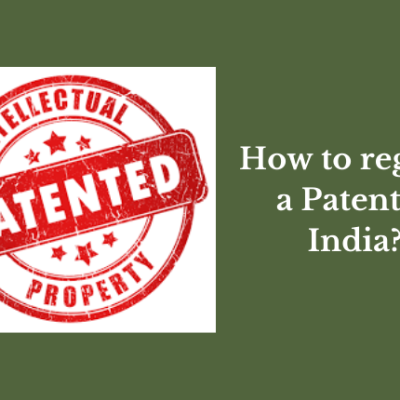Classification of Patents in India
Patents are classified based on various factors, such as their nature, subject matter, and purpose. The classification helps in organizing and efficiently examining patent applications.
1. Classification Based on Subject Matter
1.1 Product Patents
- A product patent is granted for an invention of a new product.
- Protects the physical product, preventing others from manufacturing or selling it.
✅ Example:
🔹 A new pharmaceutical drug (e.g., a COVID-19 vaccine formula).
🔹 A new type of smartphone chip.
🔹 Significance:
✔️ Strongest form of protection, as it prevents others from making identical products.
✔️ Encourages investment in R&D and new product development.
1.2 Process Patents
- A process patent is granted for an innovative manufacturing process or method of production.
- Protects the way a product is made, not the product itself.
✅ Example:
🔹 A new method of manufacturing steel to make it more durable.
🔹 A new technique for producing insulin in bulk.
🔹 Significance:
✔️ Companies can develop cheaper manufacturing techniques without copying a patented product.
✔️ Common in pharmaceutical, chemical, and industrial sectors.
2. Classification Based on Functionality
2.1 Utility Patents
- Covers new inventions with practical applications.
- Protects how an invention works.
✅ Example:
🔹 A new car engine technology that improves fuel efficiency.
🔹 A new AI-based voice assistant.
🔹 Significance:
✔️ The most common type of patent in India.
✔️ Encourages technological advancements and industrial growth.
2.2 Design Patents
- Protects the aesthetic or ornamental design of a product.
- Does not protect the functionality of the invention.
✅ Example:
🔹 The unique shape of a Coca-Cola bottle.
🔹 The design of an Apple MacBook.
🔹 Significance:
✔️ Important for fashion, consumer goods, and automotive industries.
✔️ Prevents counterfeiting of visually unique products.
3. Classification Based on International Patent System
3.1 Conventional Patents
- Filed under India’s domestic patent law.
- Only protects the invention within India.
🔹 Significance:
✔️ Suitable for small businesses and startups that only operate in India.
3.2 International Patents (PCT Applications)
- Filed under the Patent Cooperation Treaty (PCT).
- Allows patent protection in multiple countries with a single application.
✅ Example:
🔹 A pharmaceutical company filing for a patent in India, the US, and Europe simultaneously.
🔹 Significance:
✔️ Helps companies expand globally.
✔️ Protects intellectual property in multiple markets.
4. Classification Based on Industry-Specific Applications
4.1 Biotech Patents
- Protects new genes, microorganisms, genetic modifications, and biotech processes.
✅ Example:
🔹 A genetically modified crop resistant to pests.
🔹 A new vaccine formula.
🔹 Significance:
✔️ Important for pharmaceutical and agriculture industries.
✔️ Subject to strict patentability criteria in India.
4.2 Software and AI Patents
- India does not grant patents for software alone, but software combined with hardware may be patentable.
✅ Example:
🔹 An AI-driven medical imaging system.
🔹 A new encryption algorithm embedded in a security device.
🔹 Significance:
✔️ Crucial for IT and artificial intelligence sectors.
✔️ Still an evolving area in Indian patent law.
4.3 Green Technology Patents
- Protects eco-friendly and sustainable innovations.
✅ Example:
🔹 A new solar panel material with higher efficiency.
🔹 A biodegradable alternative to plastic.
🔹 Significance:
✔️ Supports India’s commitment to climate change and sustainability.
✔️ Attracts government incentives and global funding.
India’s patent classification system helps in organizing and protecting different types of innovations. Whether it’s a pharmaceutical drug, an AI-driven invention, or an eco-friendly technology, patents ensure exclusive rights to inventors while promoting economic and technological growth.








